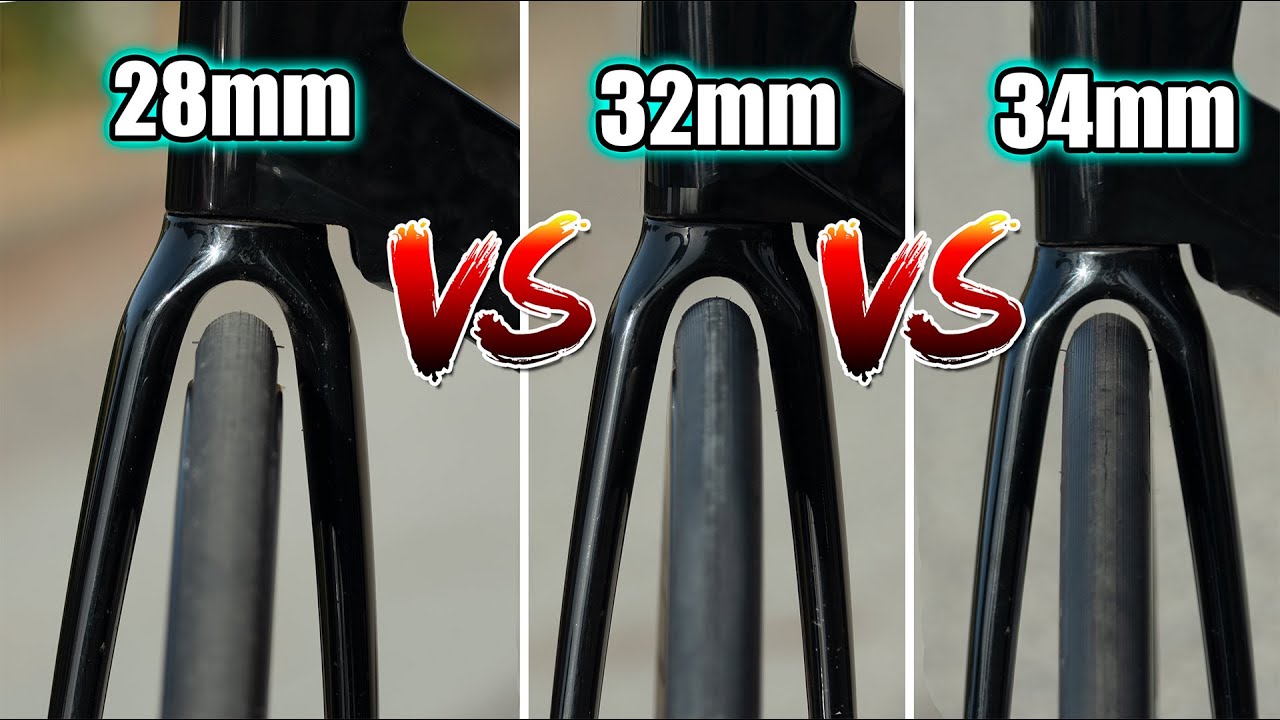How wide is too wide? | NorCal Cycling
Source: NorCal Cycling Youtube Channel: How wide is too wide?
Video How wide is too wide? with NorCal Cycling
Video How wide is too wide? with NorCal Cycling YouTube Channel.
How wide is too wide?
NorCal Cycling: The Impact of Tire Size on Road Racing
The world of road cycling is constantly evolving, and one of the most recent trends that has taken the industry by storm is the shift towards larger tire sizes for road racing. In a recent video from the Intelligency Cup, cyclists were interviewed to better understand the impact of tire size on crit racing. The consensus was clear – 28 mm is now the minimum tire size, and it only goes up from there. Even World Tour Pros are now running 30 and sometimes even 32 mm tires for road racing. This widespread adoption of larger tire sizes begs the question – how big is too big? The team at NorCal Cycling set out to answer this question through a series of rigorous tests, and the results may surprise you.
The Testing Process: Comparing 28s, 32s, and 34s
The team at NorCal Cycling embarked on a testing journey to compare the performance of 28 mm, 32 mm, and the whopping 34 mm tires. They wanted to understand the performance benefits and potential drawbacks of going bigger. Their testing protocol was meticulous and designed to provide fair and accurate results. The same bike, same rider, same power meter, same course, and same everything were used, with the only variable being the tire size. The team also adjusted the tire pressures according to the Sila tire pressure calculator, ensuring that each tire size received optimal conditions for testing.
The Results: Unveiling the Impact of Tire Size
The testing process revealed some fascinating insights into the impact of tire size on road racing performance. The team first ran tests with 28 mm tires and found them to perform adequately. They then switched to 32 mm tires, and the difference was immediately noticeable. The 32 mm tires provided a much smoother ride and were surprisingly faster, with a significant decrease in vibrations. The results were a testament to the impact of tire size on ride quality and speed.
Next up were the 34 mm tires, and the team was eager to see if they would deliver even more benefits. However, the results were unexpected. While the 34 mm tires did offer a smoother ride, they were not as fast as the 32 mm tires. The team’s conclusion was clear – for higher speeds and faster categories, the 32 mm tires were the optimum choice. However, for lower speeds and rougher terrain, the 34 mm tires provided added comfort and protection, making them a viable option as well.
Discussion and Recommendations: The Optimal Tire Choice for Road Racing
The testing results led to a thoughtful discussion among the team. It became evident that the optimal tire choice for road racing depended on various factors, including speed, terrain, and personal preferences. The team’s ultimate recommendation was that for faster categories averaging 23+ miles per hour and 300 Watts, the 34 mm tires might provide the extra protection and smoothness needed on rough roads and in pack riding scenarios. However, for speeds around 20 miles per hour and 225 Watts, the 32 mm tires were recommended for their outstanding performance and comfort. This recommendation challenged the traditional norms and expectations surrounding tire size choices for road racing.
The Future of Tire Size in Road Racing
The team’s testing experience and the subsequent results highlighted the evolving landscape of tire size choices in road cycling. The once-standard 23 mm tires have now given way to larger, more versatile options, and the industry is beginning to embrace this shift. The team at NorCal Cycling acknowledged that the concept of how big is too big remains open-ended. As bikes continue to accommodate larger tire sizes, cyclists have greater freedom to choose the tires that best suit their riding style, terrain, and performance needs.
As they concluded their testing and discussions, the team at NorCal Cycling looked back on the unexpected outcomes and the valuable insights gained from their rigorous experiments. This journey had not only revealed the impact of tire size on road racing but also challenged the preconceived notions in the cycling community. The future of tire size in road racing is undoubtedly an intriguing and evolving topic, and the team was excited to be at the forefront of this exploration.
In conclusion, the team’s comprehensive testing and subsequent recommendations shed light on the transformative impact of tire size on road racing performance. The rise of larger tire sizes has ushered in a new era of possibilities and choices for cyclists, and the future promises to bring even more innovations to the world of road cycling. NorCal Cycling’s journey is a testament to the power of rigorous testing, thoughtful discussions, and the willingness to challenge established norms in pursuit of advancement and excellence in road racing.
The opinions expressed in this space are the sole responsibility of the YouTube Channel NorCal Cycling and do not necessarily represent the views of CicloNews.










